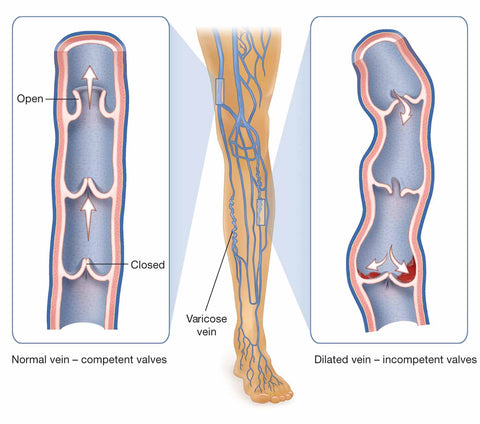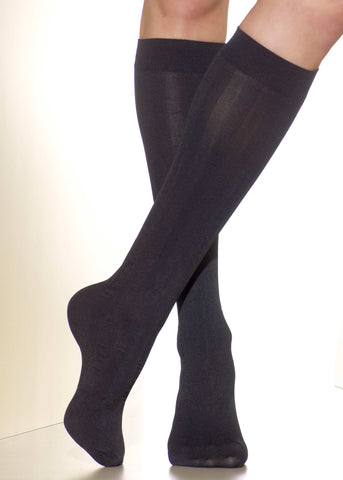What is Venous Insufficiency?
Share
For starters, let's break down the term "Venous Insufficiency".
"Venous" refers to your vascular system. This system consists of veins and arteries. Your veins are responsible for bringing de-oxygenated blood back up towards the heart and lungs. Once the blood is refueled with oxygen and nutrients from the heart and lungs, the arteries bring the blood away from the heart and to the body's other muscles to provide them with these nutrients.
"Insufficiency" refers to being inadequate, or lacking. In terms of the vascular system, this means inadequate blood circulation. This can be due to age, weight, genetics, or injuries such as a deep vein thrombosis.

Due to the nature of gravity, your legs need a mechanism to propel the blood towards your heart without letting any blood back down. This mechanism is your calf muscle working together with your heart and vein valves. The veins in your legs have one-way valves which only allow blood to flow in one direction: up. When you are walking, your calf muscle flexes, and the pressure from the muscle against the vein wall helps propel the blood towards your heart. However, long periods of inactivity, weight gain, or injury can all contribute to vein valves working improperly. When a vein valve malfunctions it will not close properly, causing backflow of blood and stretching out the vein. The result? Varicose Veins. Varicose veins can vary in severity, and some are not visible, but over time they can cause cramps, burning, and even itching sensations.

A deep vein thrombosis (DVT), or blood clot, can also form as a result of venous insufficiency. Picture this: A DVT will form on the valve barely hanging on like a flag flying in the high wind. If the flag breaks off, it flies wherever the wind guides it. Similarly, if the end of the clot breaks off, it can flow to your lungs, heart or brain resulting in very serious health complications.

Let this statistic sink in for a moment: More people die from a DVT every year than Aids and Breast Cancer combined. Don't let this fact scare you; luckily it is a very easy condition to prevent. While a number of factors can contribute to the development of venous insufficiency, it is important to be conscious and aware. No matter how busy you are, take some time to get the blood flowing throughout your legs. There are many simple exercises that you can do in the office, at home, or when you are travelling. In addition, wearing compression socks daily takes the stress of gravity off of your vein valves by providing support throughout your legs.

March is DVT Awareness Month so get yourself educated and take the proper measures to decrease your risks! Don't wait until your legs are already suffering from venous insufficiency. We've said it before and we'll say it again: EVERYONE needs to take care of their legs. They carry you everywhere and help you achieve so much; don’t you think they deserve some lovin'?



